Why Is My Skin So Blotchy?


Hives
These red welts usually itch. They can be a sign of an allergic reaction, but stress or an illness can cause them, too. A hive will usually go away within a day, but a new one could pop up in its place. You may only get a few, or you could have a bunch that connect and spread across your body. If they get worse or don’t go away, see your doctor for treatment. If you have trouble breathing or swallowing, get medical help ASAP.
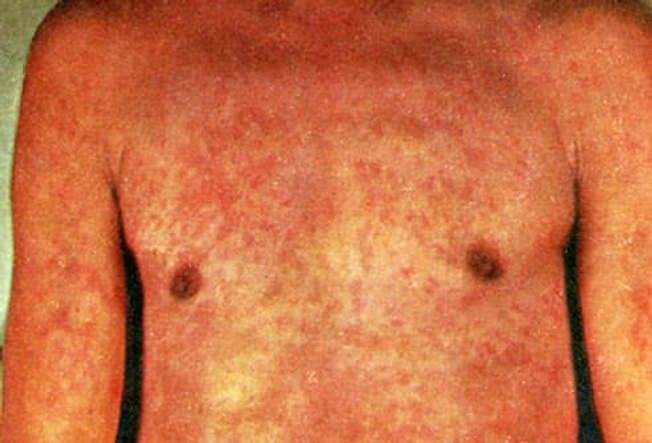
Heat Rash
This prickly red rash, which may be bumpy and is usually itchy, happens in hot, humid weather. It tends to show up in places where your skin rubs together, like your armpits and groin. It’s common in babies but can also happen to adults who get sweaty and overheated. It usually goes away on its own in 3-4 days. If it doesn’t, or if it starts to swell or ooze, call your doctor.
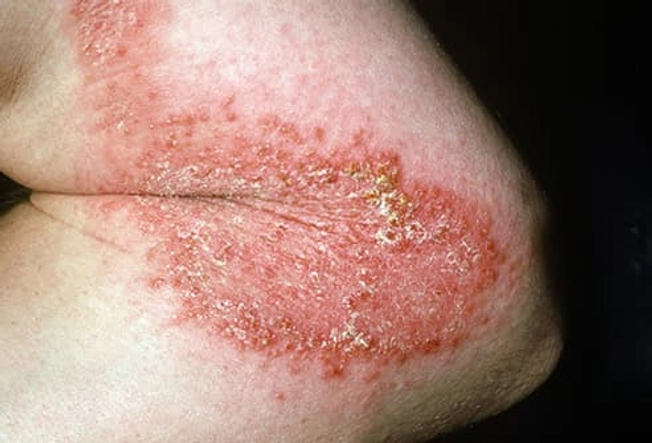
Contact Dermatitis
This happens when your skin reacts to something it touches. Sometimes it’s an allergic reaction (such as to poison ivy), and sometimes it’s irritation (from perfumes in soap, for example). Contact dermatitis can be a rash, hives, dry skin, or blisters. Your skin can turn thick or flaky, and it may darken or crack. Sometimes it takes time to figure out what’s caused it. Work with a dermatologist, especially if it gets worse.
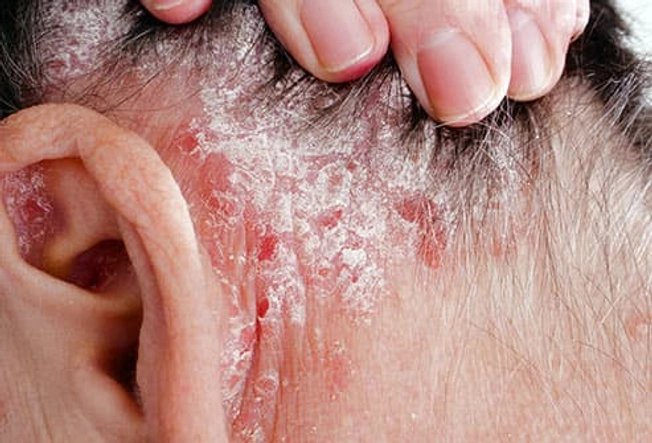
Psoriasis
There are a few types of this disease, but the most common, plaque psoriasis, shows up as raised red patches with a scaly layer of dead skin cells on top. You’ll usually see it on your scalp, knees, elbows, and lower back, but the blotches can appear anywhere on the body. Most people first notice it between the ages of 15 and 35, but the disease can crop up at any time.
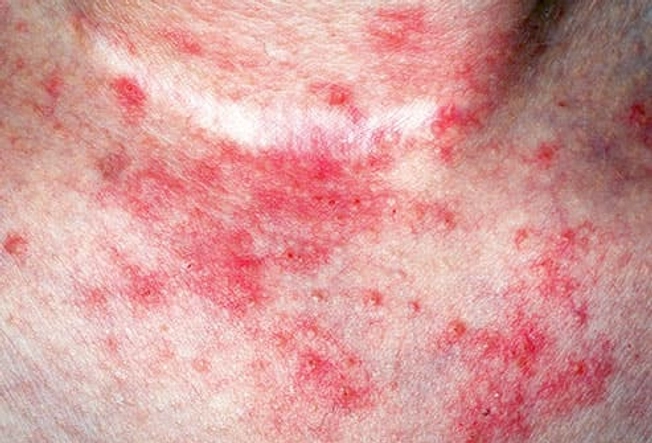
Eczema
The condition causes patches of very dry, itchy skin. Over time, these areas can thicken and turn lighter or darker than the rest of your body. Most people who have eczema first get it before age 5, and about half will outgrow it by the time they're adults. But it’s not uncommon for adults to start having symptoms.
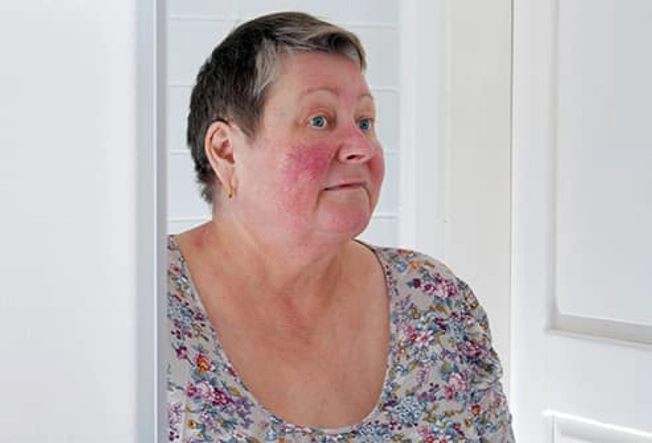
Rosacea
If you notice blotches or flushing across your cheeks, nose, chin, or forehead, you might have this skin condition. Sometimes, small pimple-like bumps form and blood vessels get more visible. Usually, it starts after age 30, then gets redder and more constant. Many things can trigger rosacea or make it worse, including drinking alcohol, eating spicy foods, stress, and menopause. There’s no cure, but treatments can control the symptoms.
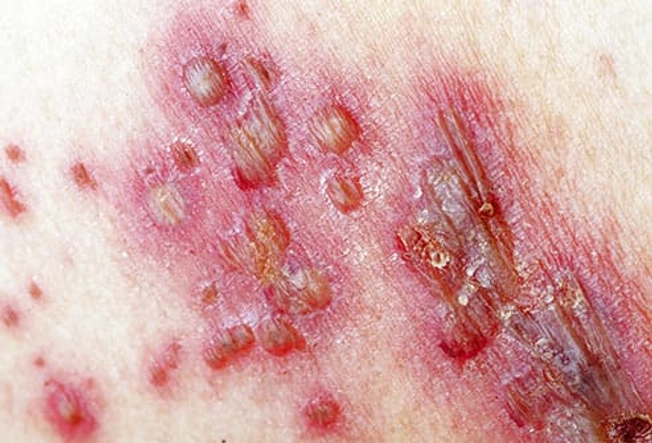
Shingles
This painful rash with blisters usually shows up as a single stripe on one side of the body. (You might have tingling or itching a few days before you see it.) It’s caused by the same virus that causes chickenpox -- the virus stays in your body and, even decades later, can flare up and cause shingles. It’s most common in people over 60. It should clear up in 2-4 weeks, but see your doctor to get medicine to prevent lasting nerve pain.

Spider veins
Also called broken capillaries, these are tiny blood vessels, located close to the surface of the skin, that get larger and more visible. The result is blotchiness and uneven skin tone on areas like the legs and face. Spider veins have many causes and are twice as common in women. They’re not harmful, but you can have them treated if you don’t like how they look.

Melasma
These brown or gray-brown patches on the face come from sun exposure, hormone changes, or both. Melasma is much more common in women -- pregnancy or birth control pills are common triggers. The patches usually show up on the forehead, upper lip, cheeks, chin, and nose. They can fade on their own after pregnancy or once you stop taking the pill, but treatments can help, too. A broad-spectrum sunscreen and strict sun avoidance will keep them from getting darker.
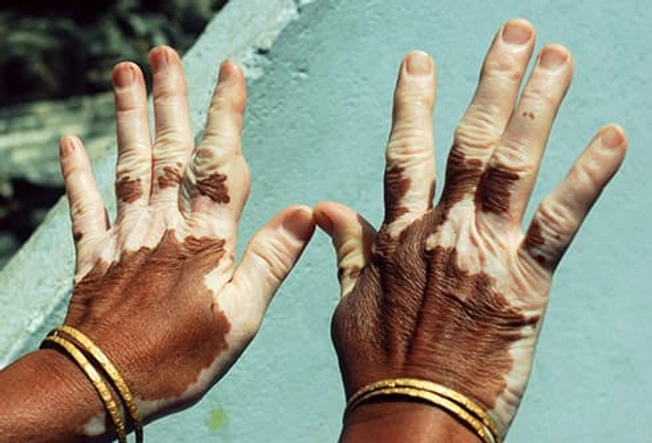
Vitiligo
With this condition, patches of your skin lose color and appear lighter. Sometimes it happens on only a few parts of the body, but vitiligo can cover large areas (even the hair, eyes, and inside of the mouth). It happens when the cells that give skin and hair their color, called melanocytes, die. Vitiligo affects men and women of all races. A few different treatments may restore your skin.
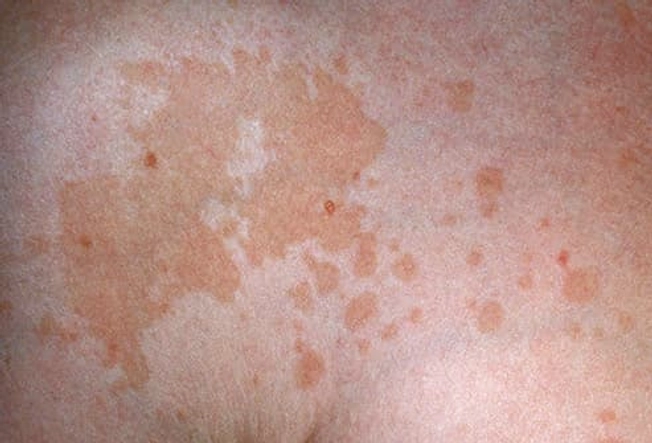
Tinea Versicolor
This fungal infection, which is especially common in tropical climates, makes white, pink, red, or brown spots form on the skin. They can show up anywhere on the body, and sometimes they’re dry, scaly, and itchy. Tinea versicolor is most common in teens and young adults with oily skin. A doctor can prescribe medicine, cleansers, or pills to treat it.

Drinking Alcohol
When you drink, especially if you have one too many, your face can flush and look blotchy. And if you have a hangover the next day, the dehydration will make any redness worse. If your skin gets very red when you imbibe, you may have alcohol flush syndrome, which is caused by an enzyme problem (it’s common in people of East Asian descent). Or you could have rosacea, and alcohol triggers your symptoms.
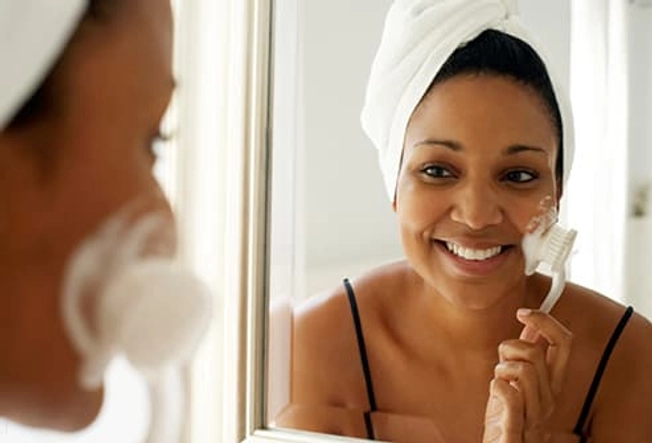
Over-Exfoliating
Whether it’s with a chemical peel or a scrub, exfoliation removes dead skin cells and leaves your skin looking brighter and refreshed. But doing it too often or too aggressively can make your face redder, make skin problems worse, and cause dark spots to show up. Ask a dermatologist about the best way to exfoliate your skin type.